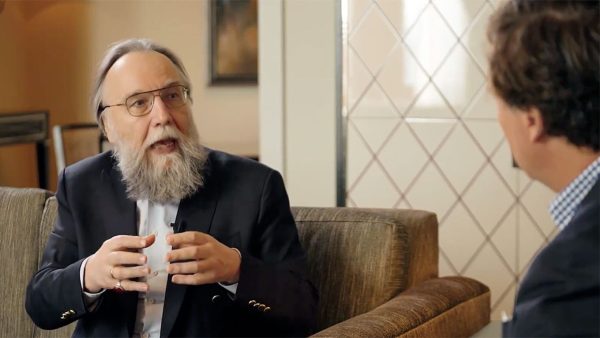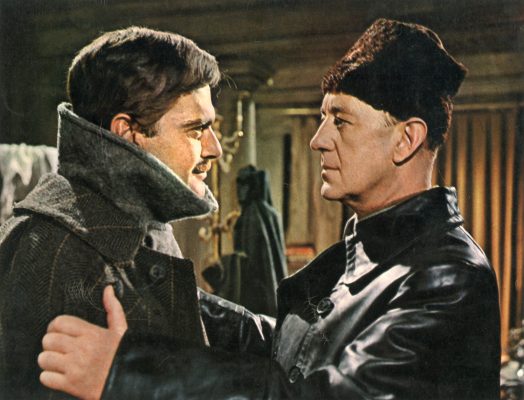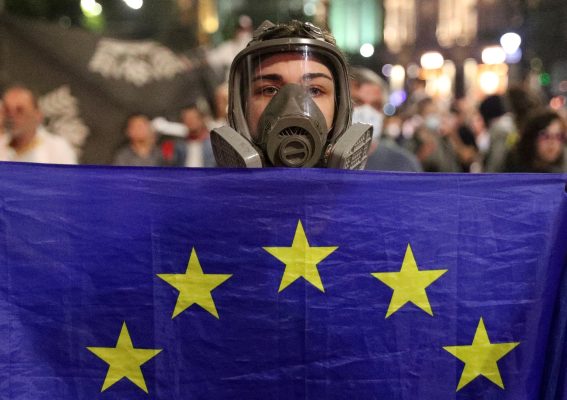Visions of decisive breakthroughs have faded as both Russia and Ukraine have seen their offensives stymied. The war has degenerated into a stalemate punctuated by bloody attacks that result in modest gains at best.
That’s frustrating for Ukraine and the Russian invaders, but NATO can rejoice. For a defensive alliance that was conceived to keep Europeans from fratricide and Russia from invading Europe, anything that makes the attacker’s job harder is a good thing.
Facing a massive Warsaw Pact army, hair-trigger poised for attack at all costs, Western planners in 1948 or 1978 could only have dreamed of the current tilt toward defense. In particular, the omnipresence of drones has made maneuver and surprise – key ingredients for many a decisive victory – extremely difficult.
Massing armor and artillery for a sudden blitzkrieg becomes a nightmare when hordes of cheap UAVs can spot any movement, call in GPS-guided missiles and artillery, or detonate themselves against a tank or howitzer. Footage from Russia’s costly fall offensive in Avdiivka illustrates the point — advancing is extremely expensive in men and materiel.
Whether Ukraine had the resources and skill to conduct its much-anticipated mechanized counteroffensive is debatable. But it’s also arguable that a NATO army would have had equal difficulty in penetrating dense Russian minefields and multiple trench lines, backed by artillery, attack helicopters, and gaggles of drones.
Russia has also struggled to find offensive success. In the first days of the invasion, its armored columns driving toward Kyiv were decimated by Ukrainian anti-tank missiles and drones. Both sides have since shrunk their ambitions, opting for small-scale attacks to wear down the enemy.
Ukraine and Russia haven’t forsaken mobile warfare out of nostalgia for the bloody World War I battlefields of the Somme and Passchendaele. But if the defense is dominant, then nibbling “bite and hold” attacks and attrition tactics become a practical alternative.
Drones and smart bombs can also benefit the attacker, of course. As German panzer divisions learned in Normandy, paralyzing a defender’s maneuver and logistics can produce catastrophic results. But in the end, it is the attacker who must break from cover and camouflage, and advance beyond the protection of anti-air and anti-drone defenses. The attacker should have a three-to-one superiority, says the traditional formula. New technologies may increase that ratio.
This has more serious implications for Russia than for NATO. Russia is the revisionist power that seeks to undo the post-1945 and post-1989 order. If Putin intends to restore the Russian empire by force of arms, then he must take the offensive.
The current imbalance will change. The question isn’t if, but when. The stalemate in Ukraine is often compared to World War I. Nations sent their armies into massive battles in 1914, confident in the supremacy of attack, until trenches and machine guns imposed unsustainable costs.
Yet the deadlock was ultimately unlocked by new technologies and techniques, including the Allied invention and deployment of tanks, as well as German “stormtroopers” using infiltration tactics. Finding a solution to trench warfare took four years and much bloodshed: despite deploying thousands of tanks, the Allies took a million casualties in their final Hundred Days offensive in late 1918. But eventually, the offense triumphed.
The real question is whether the Russo-Ukraine stalemate reflects a general trend toward defensive dominance, or if the conflict is unique. All wars have their idiosyncrasies, but the Russo-Ukraine War is stranger than fiction: suicide battalions of Russian convicts, Ukraine’s bizarre menagerie of Western equipment, and mix-and-match “frankenweapons.”
Soviet-style Kursk-like fortifications are unlikely to be the norm on most battlefields, and there is no guarantee that combat in the Suwalki Gap or the Golan Heights will resemble Bakhmut and Donets. Armies may perform better than Russia’s early bumbling offensives, or Ukraine’s clumsy counterattack. And with 1,600 miles of border to defend, NATO might find it difficult to concentrate enough forces for a solid defensive line.
Nonetheless, current developments seem to favor the defense. That’s good news for NATO, even if it delivers no reassurance to Ukraine.
Michael Peck is a defense commentator. He can be found on Twitter and LinkedIn.
Europe’s Edge is CEPA’s online journal covering critical topics on the foreign policy docket across Europe and North America. All opinions are those of the author and do not necessarily represent the position or views of the institutions they represent or the Center for European Policy Analysis.





